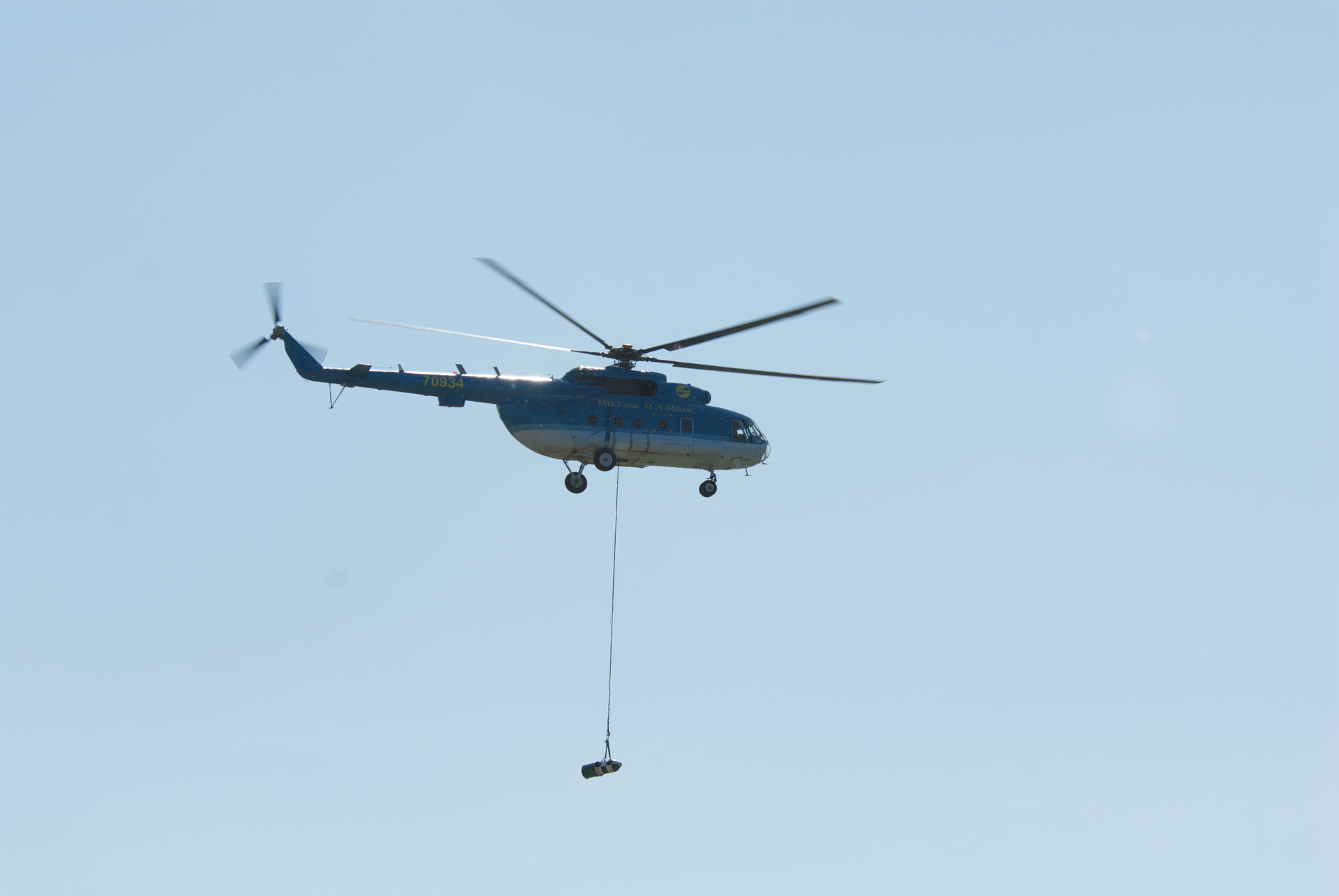Expert Descent and Landing System Test Campaign
The European eXPErimental Reentry Testbed (Expert) is an ESA Project aiming to obtain aerothermodynamic (ATD) flight data to validate design tools, ground test facilities and verification techniques.
Expert's mission is a suborbital ballistic re-entry vehicle, landing on the Kura test range on the Kamchatka Peninsula in the Far East of Russia.
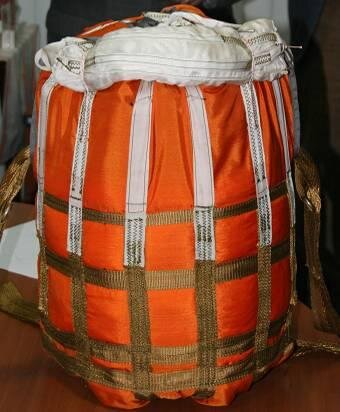
The vehicle lands with a comfortable velocity of less than 10 metres per second due to a two-stage parachute system developed by the Russian Scientific Research Institute of Parachute Construction (NIIPC).
The vehicle re-enters the atmosphere at a speed of 5 kilometres per second. It decelerates due to friction of the atmosphere, creating scorching temperatures in excess of 2000 degrees Celsius on the outer surface of the vehicle.
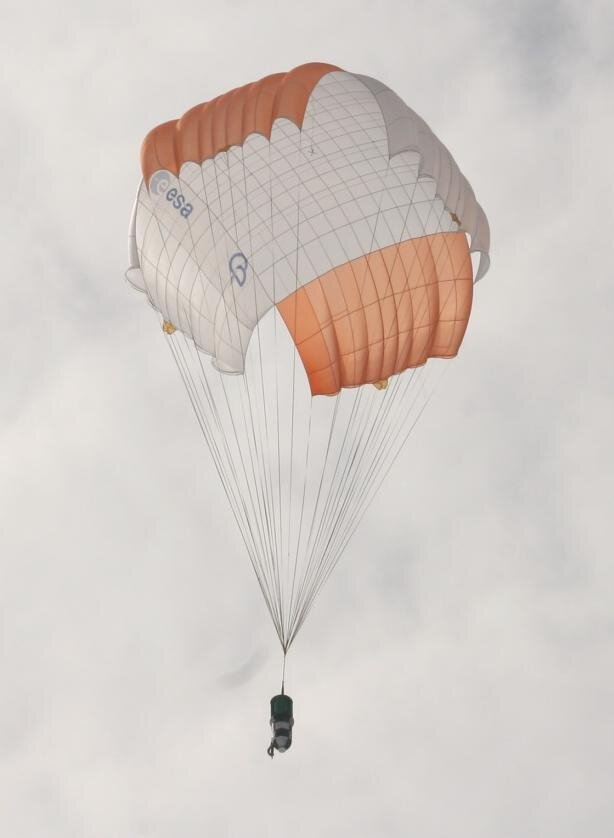
The supersonic parachute is deployed when the vehicle reaches Mach 1.7, which is approximately 1900 kilometres per hour. At almost twice the speed of sound, the physics of parachute deployment is very complex and special attention is required to prevent shock waves and structures interacting in an unstable manner, which could otherwise result in a failure.
The state of the art technology for the design and manufacturing of supersonic parachutes dates back to the extensive research and development performed in the 1960s and 1970s during the space race. The Descent and Landing System to deploy the parachutes is developed by Makeyev State Rocket Centre (SRC) and consists of a thermal protection cover which is ejected from the rear of the Expert vehicle by four pyrotechnic devices. The cover pulls out a small Pilot Parachute, which in turn pulls out the supersonic Drogue Parachute. A little while later the main parachute is deployed, resulting in a gentle touchdown on the test range in Kamchatka.
The two parachutes each have reefing belts, which control the deployment of the parachute to prevent high mechanical forces during the initial inflation of the canopy.
The parachute system test campaign included the following qualification tests:
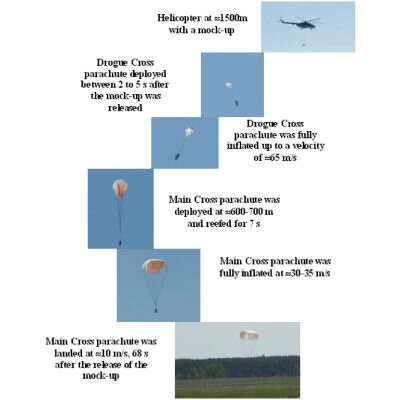
- Parachute (Pilot, Drogue and Main) mock-up tests to develop the specific Expert system and packing,
- Static strength tests of the Pilot, Drogue and Main parachutes,
- Dynamic tests of the Pilot, Drogue and Main parachutes,
- Pilot parachute deployment tests using the pneumatic gun,
- Strength tests of the Pilot and supersonic Drogue parachutes using the pneumatic gun, and
- Main Parachute Drop Tests (6 in total), for the qualification of the Main Parachute strength and operations sequence.
The parachute test campaign was concluded successfully in October 2011 and the parachute subsystem is ready for integration with the Expert Vehicle.
For further information, contact:
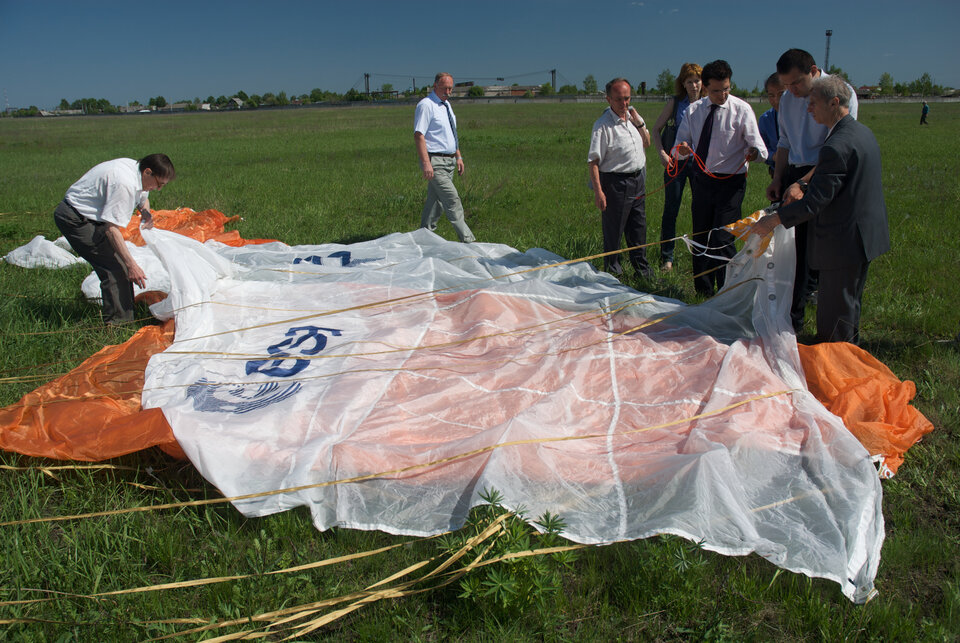
Anthony Charles Thirkettle
Expert Principal Mechanical Engineer
Anthony.Charles.Thirkettle@esa.int


